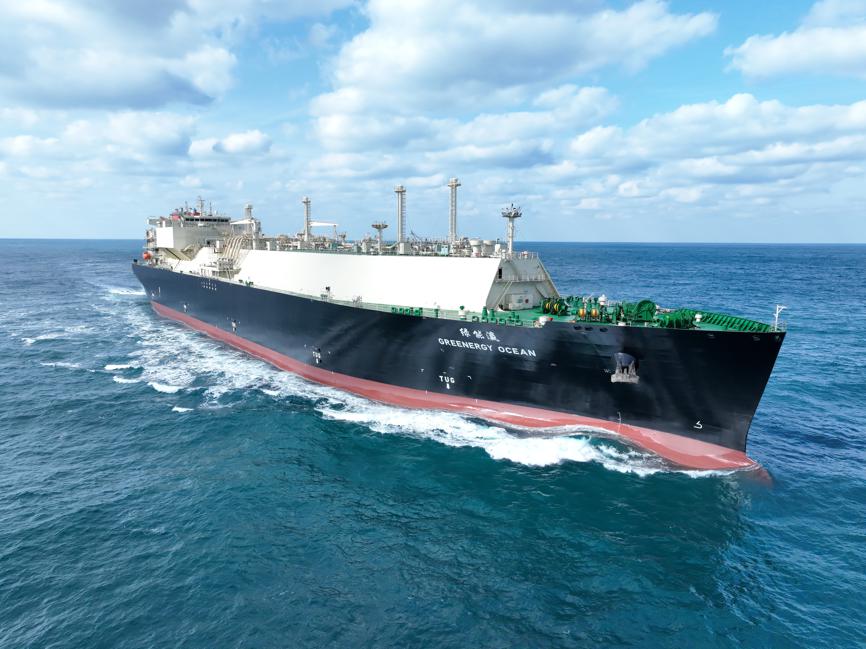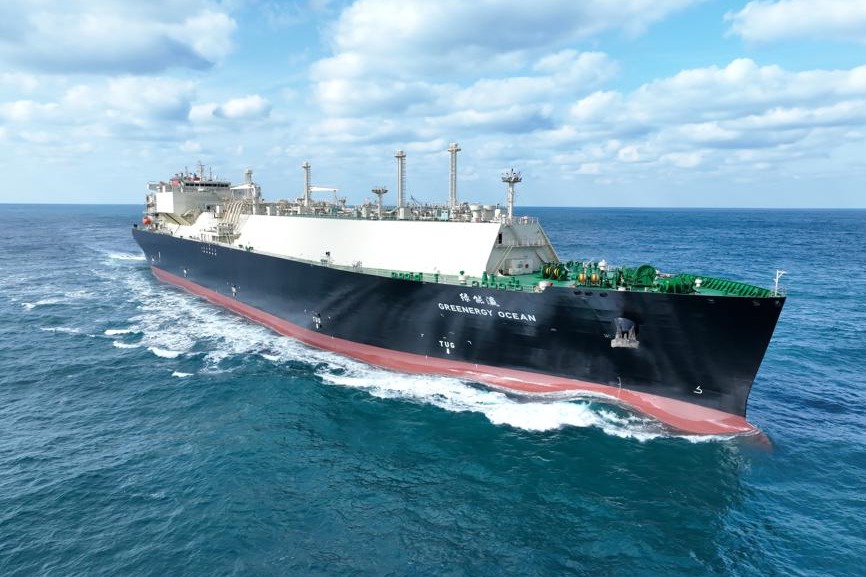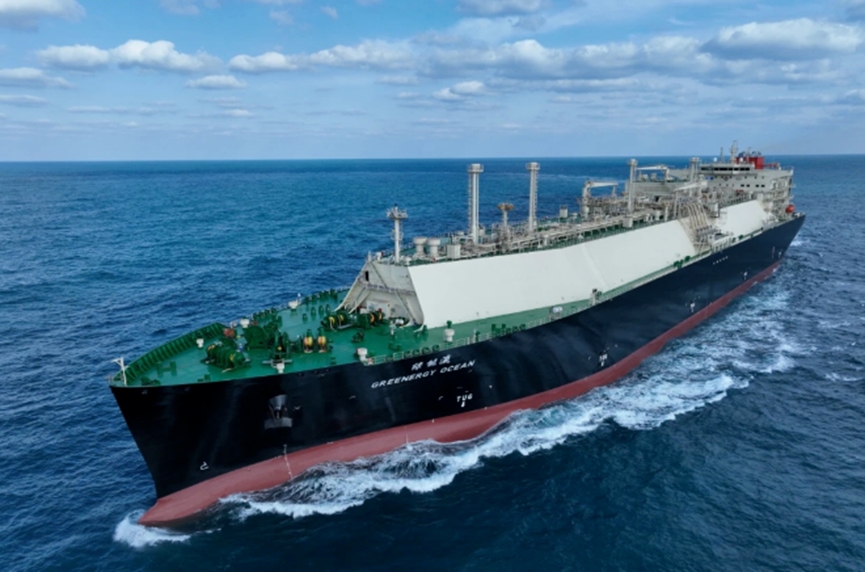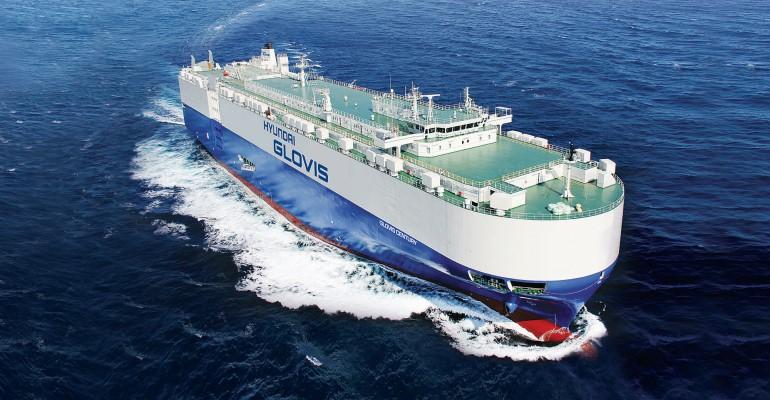Beijingwalker
Elite Member
- Nov 4, 2011
- 74,221
- 103,338
- Country of Origin

- Country of Residence

Mindblowing!! China secures 76% of global shipbuilding orders in April: data
Published: May 08, 2024 07:34 PM
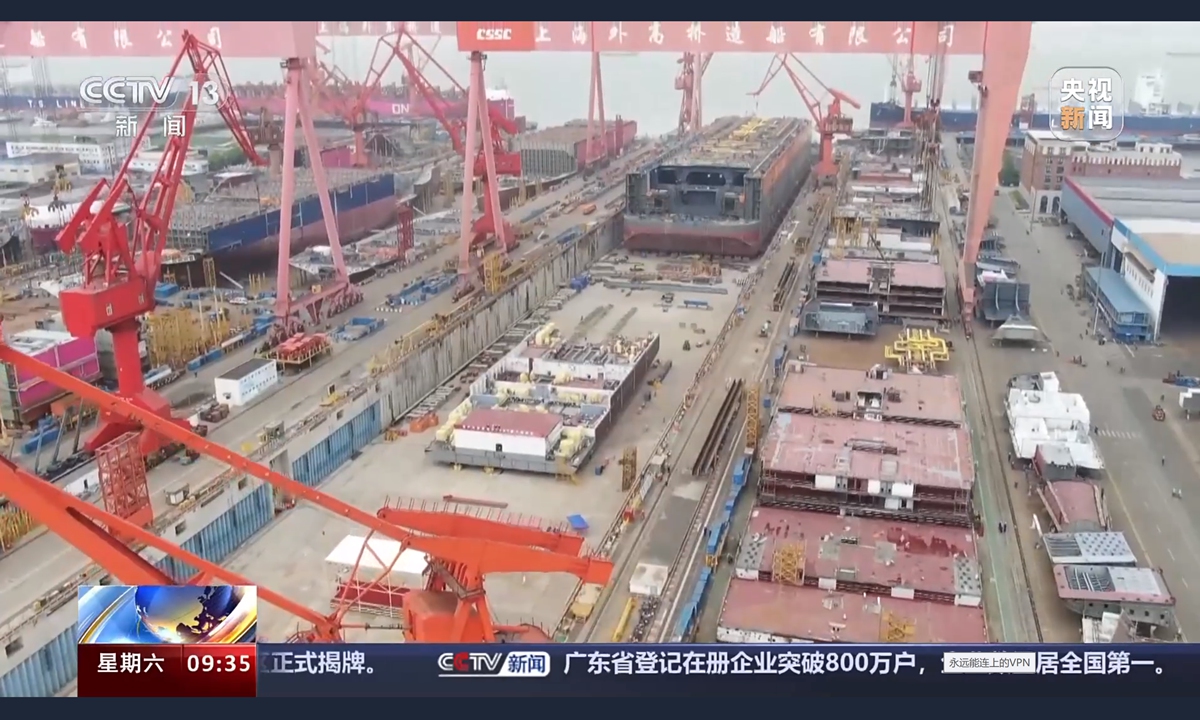
China's second domestically built large cruise ship on April 20, 2024 enters a dock at the No.2 dock of its builder Shanghai Waigaoqiao Shipbuilding Co (Photo: CCTV)
Chinese companies clinched 76 percent of all global shipbuilding orders in April, becoming the No 1 shipbuilder in the world, according to latest industry data, highlighting China's increasingly prominent role in the global shipbuilding industry.
Industry analysts note that the US' protectionism cannot stop Chinese shipbuilders' rise.
According to Clarkson Research, a provider of shipping and trade data released on Tuesday, global shipbuilding orders in April reached 4.71 million compensated gross tons (CGT) for 121 vessels, marking a 24-percent year-on-year increase. Chinese firms secured 3.58 million CGT (76 percent, 91 vessels), ranking the first; while the runner-up South Korea obtained 670,000 CGT (14 percent, 13 vessels).
Additionally, as of the end of April, unfinished orders decreased by 100,000 CGT compared to the previous month, amounting to 129.91 million CGT. China and South Korea accounted for 64.86 million CGT (50 percent) and 39.10 million CGT (30 percent) of those orders, respectively.
"China's leading position in shipbuilding has been set up since the 14th Five-Year Plan starts. While previously excelling in mid-to-low-tier market segment, China is now vigorously advancing into high-end shipbuilding domain such as making LNG vessels. Efforts by Chinese shipbuilders have garnered considerable acclaim in the world," Tian Yun, a veteran economist told the Global Times on Wednesday.
In addition to the gains in manufacturing capacity, China has also made significant breakthroughs in ship maintenance, garnering growing demand both domestically and abroad. Overall, the market now appears to be a showdown between China and South Korea, according to Tian.
Shipbuilding, known as the one of crown jewels of manufacturing, which spans over 50 sectors and boasts an extensive supply chain.
Since 2019, China's ship completions have risen steadily. In January-September 2023, China accounted for 46 percent of global completed tonnage, 63.5 percent of the new orders, ranking first worldwide.
Market watchers said that China will continue to enjoy the dominant position in the global shipbuilding market within a decade, due to its strong supply chain capabilities and increasingly eco-friendly tech advancements.
As China makes steady gains in shipbuilding, the US is worrying about losing another key industrial sector. Seeking to stymie Chinese shipbuilders, the US government launched a so-called Section 301 investigation on April 17, citing alleged "unfair economic practices" by China in maritime, logistics, and shipbuilding domains.
China's Ministry of Commerce rebuffed the US accusation, calling it baseless and a distortion of normal trade and investment activities. China isn't responsible for the US shipbuilding industry's lagging behind, resulting from the US' excessive protectionism. China's industrial growth is fueled by technological innovation and free market competition, not the non-market practices as alleged by the US, the ministry said.
Published: May 08, 2024 07:34 PM

China's second domestically built large cruise ship on April 20, 2024 enters a dock at the No.2 dock of its builder Shanghai Waigaoqiao Shipbuilding Co (Photo: CCTV)
Chinese companies clinched 76 percent of all global shipbuilding orders in April, becoming the No 1 shipbuilder in the world, according to latest industry data, highlighting China's increasingly prominent role in the global shipbuilding industry.
Industry analysts note that the US' protectionism cannot stop Chinese shipbuilders' rise.
According to Clarkson Research, a provider of shipping and trade data released on Tuesday, global shipbuilding orders in April reached 4.71 million compensated gross tons (CGT) for 121 vessels, marking a 24-percent year-on-year increase. Chinese firms secured 3.58 million CGT (76 percent, 91 vessels), ranking the first; while the runner-up South Korea obtained 670,000 CGT (14 percent, 13 vessels).
Additionally, as of the end of April, unfinished orders decreased by 100,000 CGT compared to the previous month, amounting to 129.91 million CGT. China and South Korea accounted for 64.86 million CGT (50 percent) and 39.10 million CGT (30 percent) of those orders, respectively.
"China's leading position in shipbuilding has been set up since the 14th Five-Year Plan starts. While previously excelling in mid-to-low-tier market segment, China is now vigorously advancing into high-end shipbuilding domain such as making LNG vessels. Efforts by Chinese shipbuilders have garnered considerable acclaim in the world," Tian Yun, a veteran economist told the Global Times on Wednesday.
In addition to the gains in manufacturing capacity, China has also made significant breakthroughs in ship maintenance, garnering growing demand both domestically and abroad. Overall, the market now appears to be a showdown between China and South Korea, according to Tian.
Shipbuilding, known as the one of crown jewels of manufacturing, which spans over 50 sectors and boasts an extensive supply chain.
Since 2019, China's ship completions have risen steadily. In January-September 2023, China accounted for 46 percent of global completed tonnage, 63.5 percent of the new orders, ranking first worldwide.
Market watchers said that China will continue to enjoy the dominant position in the global shipbuilding market within a decade, due to its strong supply chain capabilities and increasingly eco-friendly tech advancements.
As China makes steady gains in shipbuilding, the US is worrying about losing another key industrial sector. Seeking to stymie Chinese shipbuilders, the US government launched a so-called Section 301 investigation on April 17, citing alleged "unfair economic practices" by China in maritime, logistics, and shipbuilding domains.
China's Ministry of Commerce rebuffed the US accusation, calling it baseless and a distortion of normal trade and investment activities. China isn't responsible for the US shipbuilding industry's lagging behind, resulting from the US' excessive protectionism. China's industrial growth is fueled by technological innovation and free market competition, not the non-market practices as alleged by the US, the ministry said.






